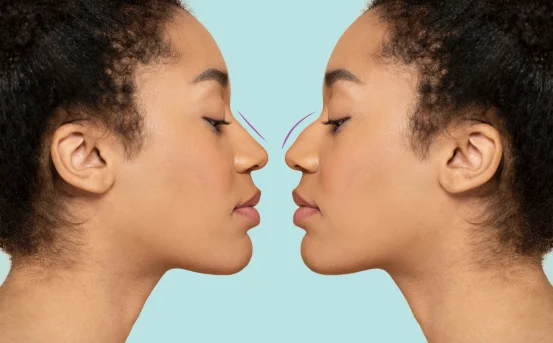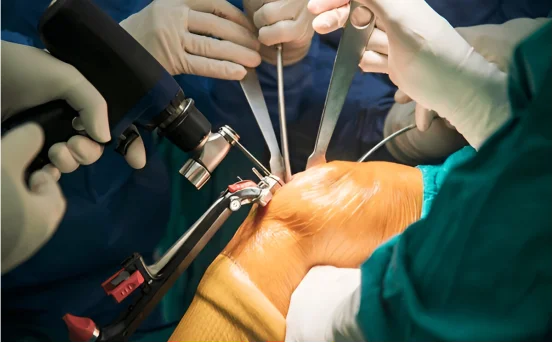Introduction
Rhinoplasty, commonly known as a “nose job,” is a surgical procedure that alters the shape, structure, or function of the nose. While many associate rhinoplasty with cosmetic enhancement, its scope extends far beyond aesthetics. The nose is not only a prominent facial feature but also a vital structure for breathing and olfaction (sense of smell). Any disruption in its anatomy whether congenital, injury-induced, or illness-related can lead to both cosmetic dissatisfaction and functional impairment.
People may consider rhinoplasty for various reasons. Some seek it to correct birth defects or injuries, while others want to improve nasal function due to breathing difficulties. The surgery is also widely pursued for cosmetic refinement, helping individuals feel more confident and aligned with their desired appearance. Regardless of the reason, rhinoplasty is a deeply personal decision, often driven by physical needs, emotional well-being, or both. Below are the most common situations when rhinoplasty surgery is needed or beneficial.
When Rhinoplasty Surgery is Needed
- Breathing Difficulties Due to Nasal Obstruction :- Many individuals suffer from nasal obstruction that impairs airflow and causes difficulty in breathing, especially during sleep or physical activity. A deviated septum, enlarged turbinates, or structural deformities within the nasal passage are typical culprits. When these issues cannot be managed with medications or non-surgical interventions, functional rhinoplasty becomes essential. The procedure aims to correct the internal architecture of the nose, often through septoplasty (straightening of the septum) or turbinate reduction, restoring normal breathing patterns and improving quality of life.
- Post-Traumatic Nasal Deformity :- Injuries to the nose, such as fractures or blunt trauma, can result in both visible deformities and functional issues. The nose may appear crooked, flattened, or misshapen, and internal damage may restrict airflow. In such cases, rhinoplasty is often performed to reconstruct the damaged structures, align the nasal bones, and restore the nose to its pre-injury appearance and function. Addressing trauma early can prevent long-term complications and may also carry emotional significance for the patient in terms of self-image and confidence.
- Congenital Nasal Defects :- Some people are born with nasal abnormalities that affect appearance and function. These defects can range from cleft nasal deformities and asymmetrical nostrils to collapsed nasal valves or underdeveloped nasal structures. Rhinoplasty is frequently required to correct these anomalies, particularly in childhood or adolescence as facial development progresses. Early intervention can help children breathe better, speak more clearly, and avoid bullying or self-esteem issues associated with facial differences.
- Cosmetic Dissatisfaction with Nose Shape or Size :- Cosmetic rhinoplasty is one of the most common reasons for undergoing this surgery. People may be dissatisfied with features like a dorsal hump (bump on the nasal bridge), wide nostrils, bulbous tip, or asymmetry that doesn’t align with their facial proportions or personal aesthetic goals. In these cases, rhinoplasty is elective and driven by personal preference. Even minor refinements can lead to significant improvements in facial harmony and self-esteem. A well-performed cosmetic rhinoplasty preserves or enhances the individual’s unique features while creating a balanced, natural look.
- Revision or Secondary Rhinoplasty :- Sometimes, previous rhinoplasty procedures do not yield the desired results or lead to new issues, such as breathing problems or unnatural contours. A secondary or revision rhinoplasty is then needed to correct these problems. This type of surgery is typically more complex due to the presence of scar tissue and altered anatomy. The decision to undergo revision rhinoplasty requires careful evaluation, realistic expectations, and often a highly experienced surgeon who specializes in corrective nasal surgery.
- Aging-Related Nasal Changes :- As people age, changes in skin elasticity, bone density, and cartilage can subtly alter the shape of the nose. The tip may droop, the bridge may appear more prominent, or nasal valves may collapse, making breathing difficult. Rhinoplasty in older adults addresses both form and function, helping maintain a youthful facial appearance and improving respiratory health. Because healing may take longer in aging patients, thorough preoperative assessment is necessary to ensure the safest outcomes.
- Chronic Sinus Issues :- Although rhinoplasty is not a direct treatment for sinusitis, it can be part of a broader surgical plan when structural nasal abnormalities contribute to recurrent or chronic sinus infections. A deviated septum, for instance, can obstruct sinus drainage, leading to persistent inflammation. In such cases, rhinoplasty is often combined with sinus surgery to open up the passages and facilitate better airflow and drainage. This integrated approach can dramatically reduce sinus-related symptoms and improve daily comfort.
- Nasal Valve Collapse :- The nasal valve area, located inside the nostrils, is one of the narrowest points in the airway and is crucial for efficient breathing. Weak or collapsed valves either congenital or acquired can lead to significant airflow obstruction. Rhinoplasty techniques can reinforce or rebuild these structures using cartilage grafts, thereby improving nasal function. Addressing nasal valve collapse not only enhances breathing but also prevents the need for mouth breathing, which can affect sleep, speech, and oral health.
- Psychological or Emotional Well-being :- The appearance of one’s nose can have a profound impact on self-image and emotional health. People who are highly self-conscious about their noses may suffer from anxiety, social withdrawal, or diminished confidence. In some cases, these feelings persist despite reassurance from others. Rhinoplasty, when performed for the right reasons and with realistic expectations, can significantly boost mental and emotional well-being. Patients often report higher satisfaction with their appearance, increased social confidence, and a more positive self-perception after surgery.
Conclusion
Rhinoplasty surgery is much more than a cosmetic procedure it is a multifaceted intervention that addresses both aesthetic concerns and functional impairments. Whether it’s to correct a traumatic injury, improve breathing, reshape congenital anomalies, or enhance self-confidence, the reasons for rhinoplasty are as diverse as the individuals seeking it. Understanding when the surgery is needed helps patients make informed decisions and prepare for a journey that not only transforms their nose but often elevates their overall quality of life. With the guidance of an experienced plastic or ENT surgeon, rhinoplasty can offer enduring benefits that go well beyond the surface.























